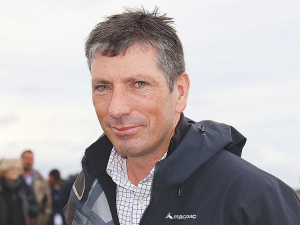Idea of killing cows to curtail methane emissions 'crazy'
Visiting US climate change expert Dr Will Happer says the idea of reducing cow numbers to greatly reduce methane emissions is crazy.
 Sam McIvor says the misconception that methane reduction targets are 'letting agriculture off the hook' needs to be cleared up.
Sam McIvor says the misconception that methane reduction targets are 'letting agriculture off the hook' needs to be cleared up.
Beef + Lamb NZ is calling on the Government to use the split gas approach in its recently announced climate action plan.
The split gas approach takes into consideration the different durations of greenhouse gases in the atmosphere, and their relative potency, to provide a more accurate and more easily understood picture of the complexities of the subject.
As a greenhouse gas, methane is 28 times more potent on a per kilogram basis than carbon dioxide. However, methane also has a far shorter half-life of 9-12 years versus 100-120 for CO2. This means short term reductions in methane emissions will have a faster long-term reduction in overall warming effect - so long as methane emission remains neutral, or reductions outstrip the rate at which it is added to the atmosphere.
BLNZ chief executive Sam McIvor says higher methane reduction targets must not disadvantage sectors that have already made significant cuts and are already being asked for a disproportionately high share - such as the red meat sector.
He labels the Government's announcements and reporting of current climate plans as opaque and, at points, too demanding on farmers.
"New Zealand's farmers are the best in the world at responding to change. Like all sectors they have to work towards reducing emissions - all we're asking is that they're only being asked to do what's fair," McIvor explains.
"Without proper reporting of warming, it's unclear what each sector is responsible for and the public doesn't understand. We need to address this misconception that methane reduction targets are 'letting agriculture off the hook'."
McIvor notes that while there has been attention on buying offsets through the planting of forests overseas, serious questions remain about what the increased targets mean domestically.
"We would be very concerned if the new NDC meant the Government needed to rely even more heavily on forestry offsetting within New Zealand. We are already losing too much productive sheep and beef farmland to carbon farming with devastating effects on rural communities," he adds.
"Fossil fuel emitters shouldn't be able to just plant their way out of jail, particularly not at the expense of the most sustainable meat production systems in the world. There instead needs to be actual reductions in warming."
McIvor says the sheep and beef sector has reduced its absolute emissions by more than 30% since 1990 and that total methane emissions from all agriculture have been stable for the last decade.
"There needs to be recognition of the progress made - we shouldn't be asking sectors that have already done the heavy lifting to pick up more to offset a lack of progress in other areas."
How It Works
Plants and grass photosynthesize and store carbon in their leaves.
When the plants are eaten by cattle the carbon is converted into methane, which the animals belch out.
After that 10-12 years the methane breaks back down into CO2 - but as recycled carbon. This is then photosynthesized by the plants, thus restarting the natural cycle again.
Grace Su, a recent optometry graduate from the University of Auckland, is moving to Tauranga to start work in a practice where she worked while participating in the university's Rural Health Interprofessional Programme (RHIP).
Two farmers and two farming companies were recently convicted and fined a total of $108,000 for environmental offending.
According to Ravensdown's most recent Market Outlook report, a combination of geopolitical movements and volatile market responses are impacting the global fertiliser landscape.
Environment Canterbury, alongside industry partners and a group of farmers, is encouraging farmers to consider composting as an environmentally friendly alternative to offal pits.
A New Zealand dairy industry leader believes the free trade deal announced with India delivers wins for the sector.
The Coalition Government will need the support of at least one opposition party to ratify the free trade deal with India.